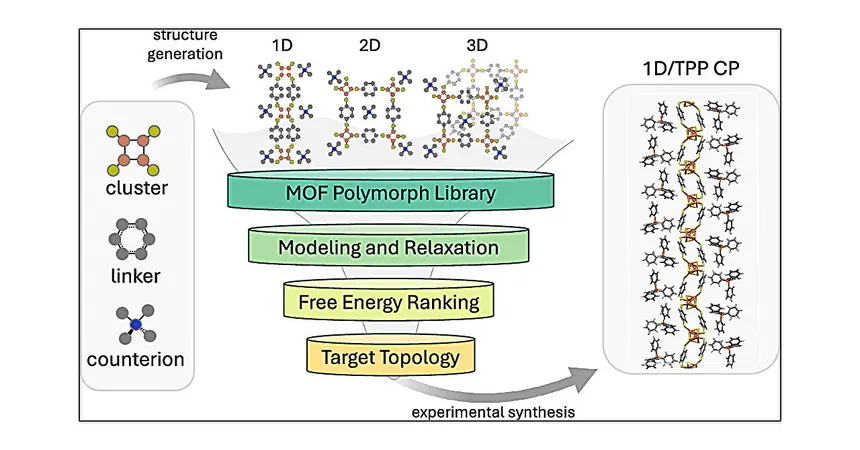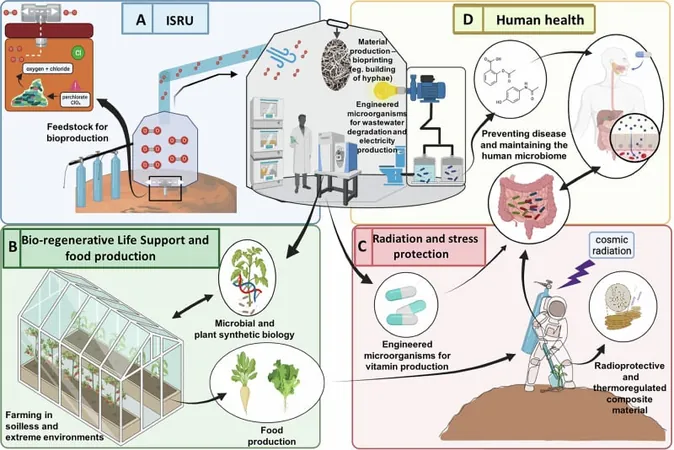
Unlocking the Future: New Tool Predicts Game-Changing Stable Metal-Organic Frameworks for Clean Energy
2025-05-21
Author: Wei
As the world pivots towards sustainable energy, there's an urgent need for innovative materials that can facilitate energy transport without the harmful effects of fossil fuel combustion. Enter metal-organic frameworks (MOFs)—the next big thing in energy catalysts, crafted from metal ions connected by organic linkers.
A groundbreaking computational tool developed by scientists at the University of Chicago's Pritzker School of Molecular Engineering is here to change the game. Led by Ph.D. student Jianming Mao and Professor Andrew Ferguson, this cutting-edge tool accurately predicts which MOFs demonstrate the highest stability for various applications.
The breakthrough became evident when the tool identified a new iron-sulfur MOF, which was successfully synthesized by postdoctoral researcher Ningxin Jiang and Professor John Anderson. This milestone was further validated by a team at Stony Brook University, marking a significant achievement in the pursuit of materials for decarbonization.
"Developing new catalytic materials is a top priority for our center, and this tool proves that collaboration between computational and experimental scientists can lead to real breakthroughs," noted Ferguson.
The Science Behind Stable Materials
MOFs are lauded for their porous structure and tunable properties, making them ideal candidates for energy storage and as sensors. However, the path from theoretical prediction to practical synthesis is fraught with challenges. Despite computational predictions of over 500,000 MOFs, only a handful have been successfully produced.
Mao emphasizes, "Finding a stable MOF design is one challenge; successfully creating it in the lab is an entirely different story." To tackle this issue, Ferguson and his team devised a computational screening pipeline that links predicted stability to potential MOF designs using thermodynamic integration. This advanced technique simplifies complex MOF structures into forms that reveal their stability without diving into minute quantum mechanical calculations.
Ferguson dubbed the process "computational alchemy," as it transforms complex chemical systems into more manageable ones, akin to how ancient alchemists sought to turn lead into gold. Although computationally intensive, this innovative approach reduces processing time to just a day.
Fueling Future Discoveries
With their screening pipeline, the team successfully predicted the stability of the new iron-sulfur MOF, known as Fe4S4-BDT—TPP. The MOF's synthesis and characterization by expert teams confirmed its predicted properties, showcasing the tool's reliable predictions.
Anderson remarked on the significance of this innovative methodology: "This model accelerates the material discovery process—allowing us to predict materials instead of going through trial and error." Now, as the team continues to synthesize this MOF, they’ll also explore its potential as a catalyst.
Moreover, Ferguson and Mao have made their virtual screening tool publicly accessible, empowering other researchers to explore stable MOFs effectively. Ferguson added, "This tool opens the door for scientists to sift through vast numbers of compounds to find the perfect match for their needs."
With such pioneering advancements, the path to a sustainable energy future seems more promising than ever.


 Brasil (PT)
Brasil (PT)
 Canada (EN)
Canada (EN)
 Chile (ES)
Chile (ES)
 Česko (CS)
Česko (CS)
 대한민국 (KO)
대한민국 (KO)
 España (ES)
España (ES)
 France (FR)
France (FR)
 Hong Kong (EN)
Hong Kong (EN)
 Italia (IT)
Italia (IT)
 日本 (JA)
日本 (JA)
 Magyarország (HU)
Magyarország (HU)
 Norge (NO)
Norge (NO)
 Polska (PL)
Polska (PL)
 Schweiz (DE)
Schweiz (DE)
 Singapore (EN)
Singapore (EN)
 Sverige (SV)
Sverige (SV)
 Suomi (FI)
Suomi (FI)
 Türkiye (TR)
Türkiye (TR)
 الإمارات العربية المتحدة (AR)
الإمارات العربية المتحدة (AR)